With gorgeous views of the Ozark mountains and engaging, challenging golf holes, Ozarks National Golf Course in Branson, Missouri is a must-play for any golfer. Opening in 2019, this Coore and Crenshaw designed course ranks number 30 on the Golf Digest top 100 courses you can play in the United States.
The course was built by Johnny Morris, the owner of Bass Pro Shops and Big Cedar Lodge. Big Cedar Lodge now has 3 18-hole courses and two par 3 courses in its golf facilities, including the first Tiger Woods design open to the public, Payne’s Valley.
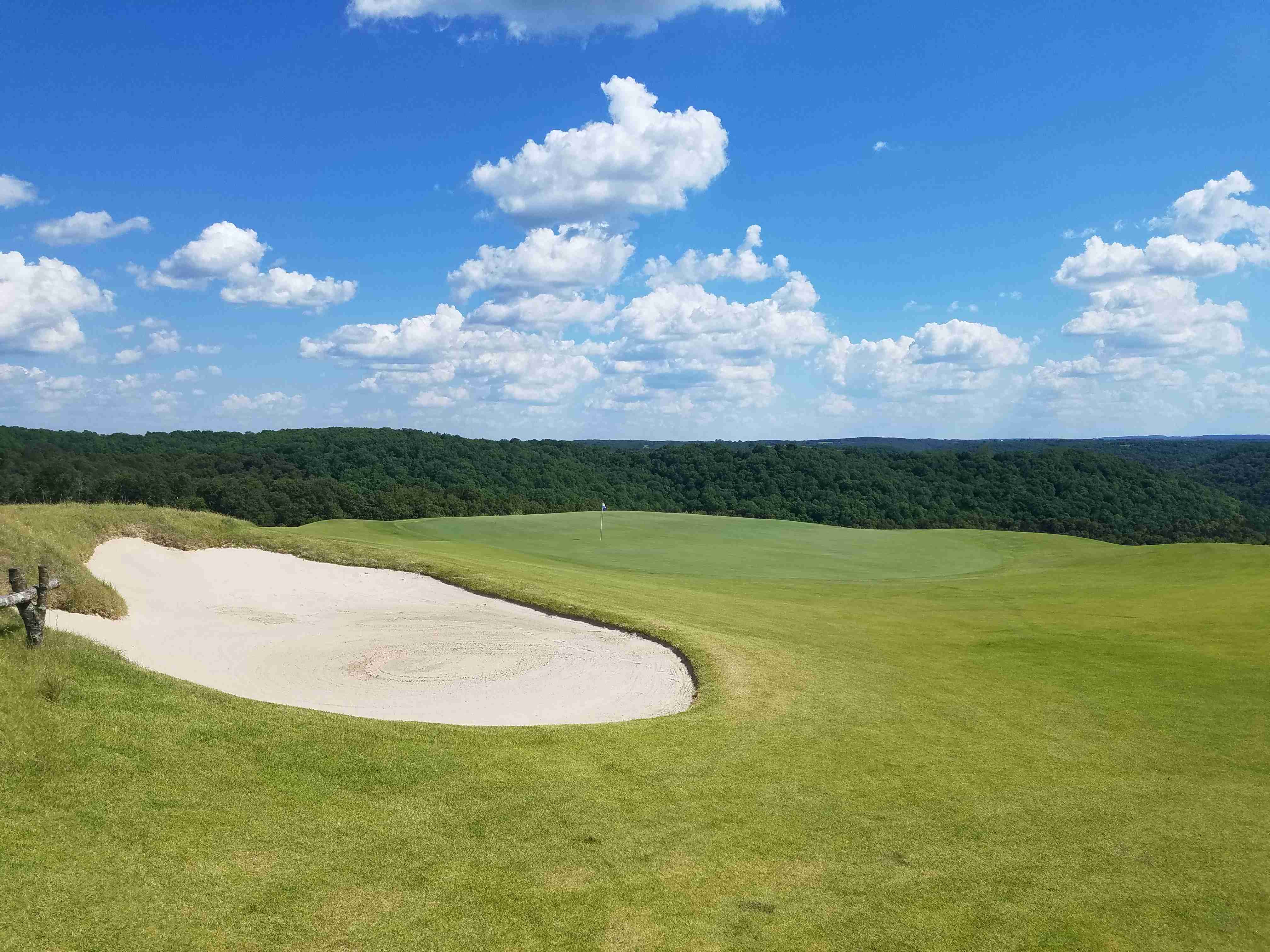
The course plays along the top of ridges, providing grand views of the surrounding hills and valleys. There is plenty of elevation change, but more subtle than the changes could be based on the steep slopes. The course has wide fairways with minimal rough, but once the fairway gives way to native grass, the golfer will have trouble finding a wayward tee shot.
The greens are large and sloping with closely mown runoff and collection areas around the greens. The green at the par 3 12th has been called the largest green in Missouri and has a traditional Redan slope from the front right to back left.
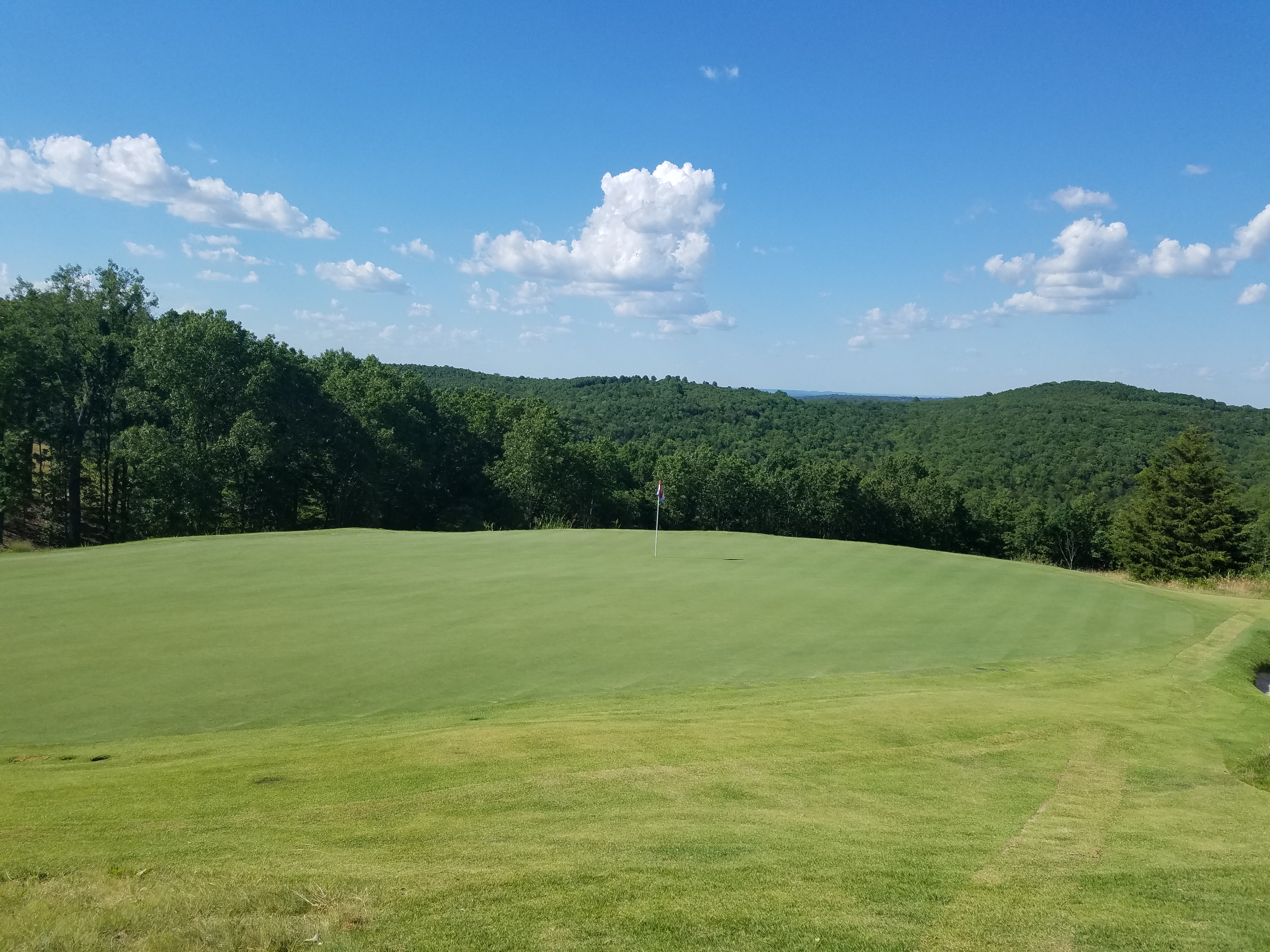
The routing of Ozarks National groups holes together over the course of the round. The first three holes go out and come back with the third green ending up near the first tee. Similarly, the sixth through ninth holes go out and come back to the center of the property. The front nine does not return to the clubhouse, but instead, there is a halfway house the golfer returns to several times.

Hole by Hole at Ozarks National Golf Course
Hole 1
The opening par 5 is reachable for longer players though the green might not be visible because of how the green sits over a hill. The second shot plays to a wide fairway that includes the area in front of the second green.
Hole 2
The first of 3 par 3s on the front nine plays up the hill. The hill makes judging the proper distance for the approach shot difficult. The green slopes from left to right (looking at the green from the tee), which makes an up and down from the left bunker to a left pin tough.
Hole 3
Number 3 is a short par 4 where longer players can drive the green. The two-tiered green puts a premium on distance control with a wedge for players who choose to layup. The green is defended by runoff areas short and right, leaving a challenging up and down from a tight lie.
Hole 4
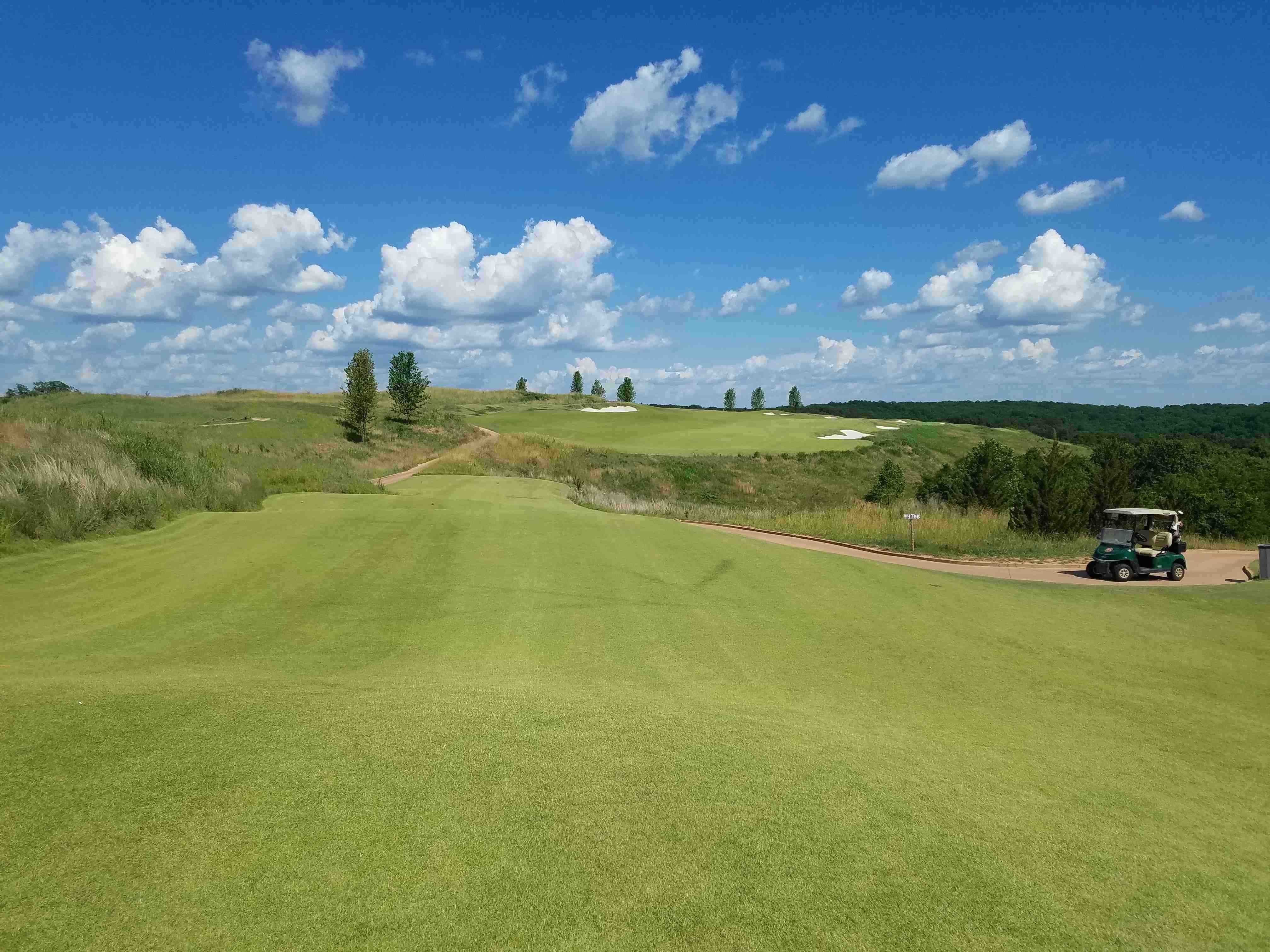
The fourth hole is one of the more memorable on the front line thanks to the green complex. The drive requires a small carry over a grassland area and heads up a hill. The hill then crests and then heads down to the large, infinity green. There is a bunker about 30 yards short of the green that can make the approach shot appear shorter than it is. The fairway runs downhill towards the green after the bunker and the green slopes from front to back. The golfer needs to allow for their second shot to run out if they are hitting a longer iron into the green.
Hole 5
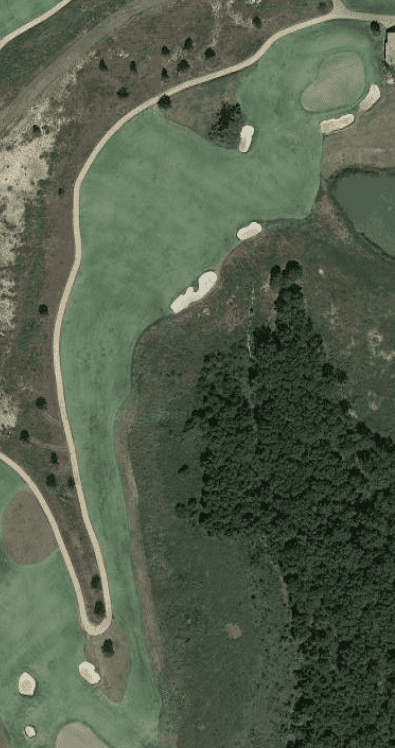
Another short par 4 that requires the most strategic tee shot decision on the front nine. The hole is driveable for the longer player but there is trouble right of the green. The layup off the tee is to a wide fairway but there is a tall tree that can block approach shots if the tee shot finds the left side of the fairway. The two-tiered green adds to the
Hole 6
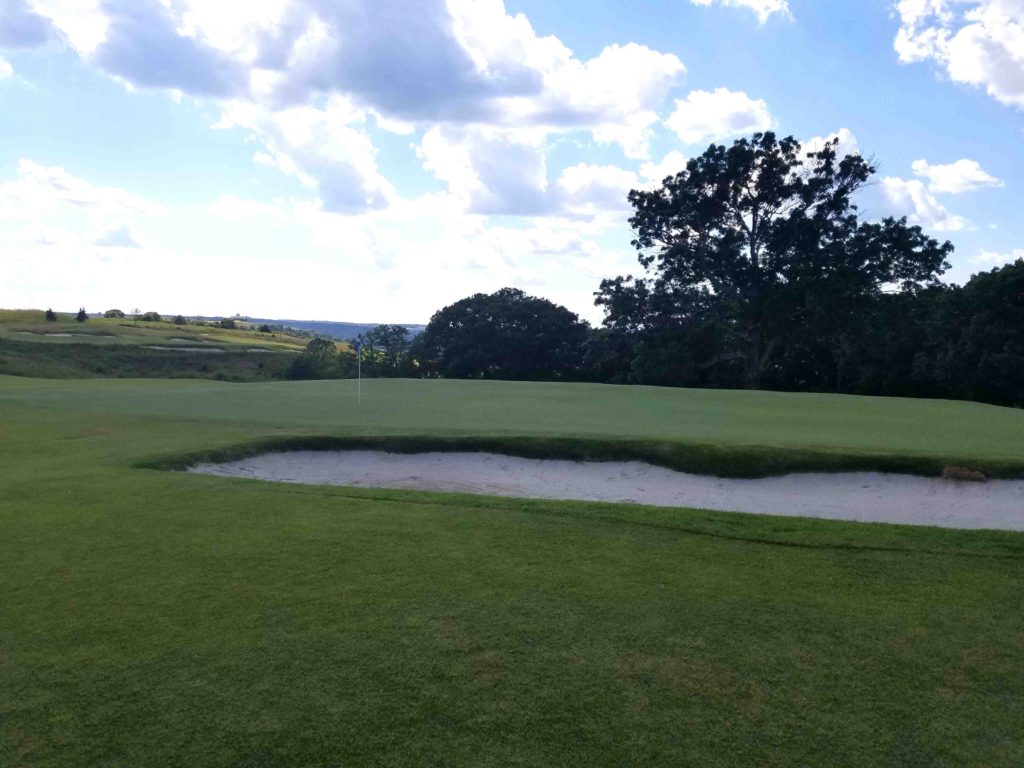
This picturesque par 3 can vary greatly in length thanks to the 40 yard deep green. A tee shot that misses left and ends up in the bunkers leaves a difficult up and down from well below the surface of the green.
Hole 7
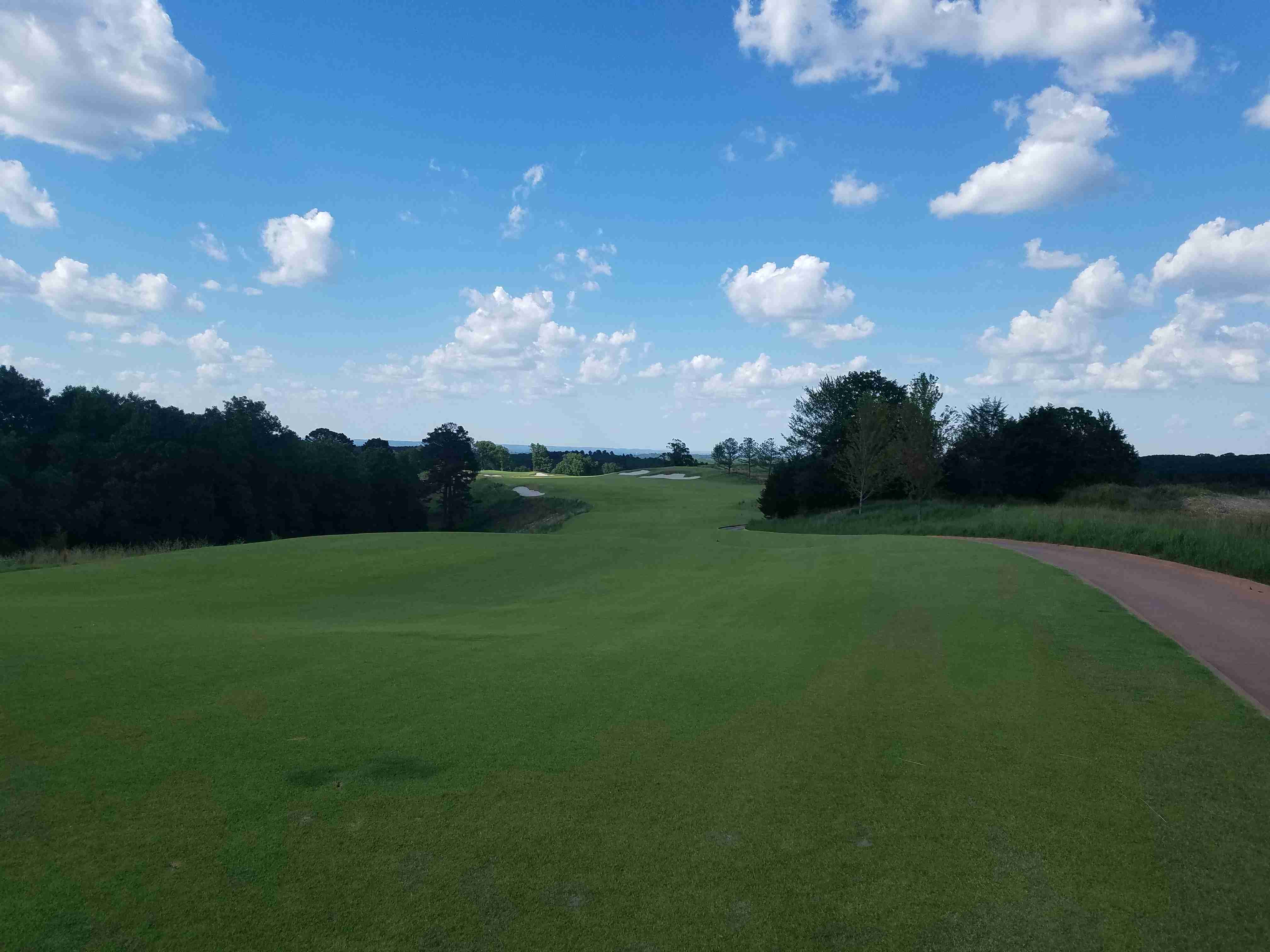
A good tee shot on the 7th hole will give many golfers an option to go for this par 5 in two. There is room to bail out right off the tee, but hitting one left will most likely lead to a penalty stroke because of the steep drop off into a native area. The same is true for the approach shot to the green as well. There is plenty of room to miss right of the green, but missing left is problematic.
Hole 8
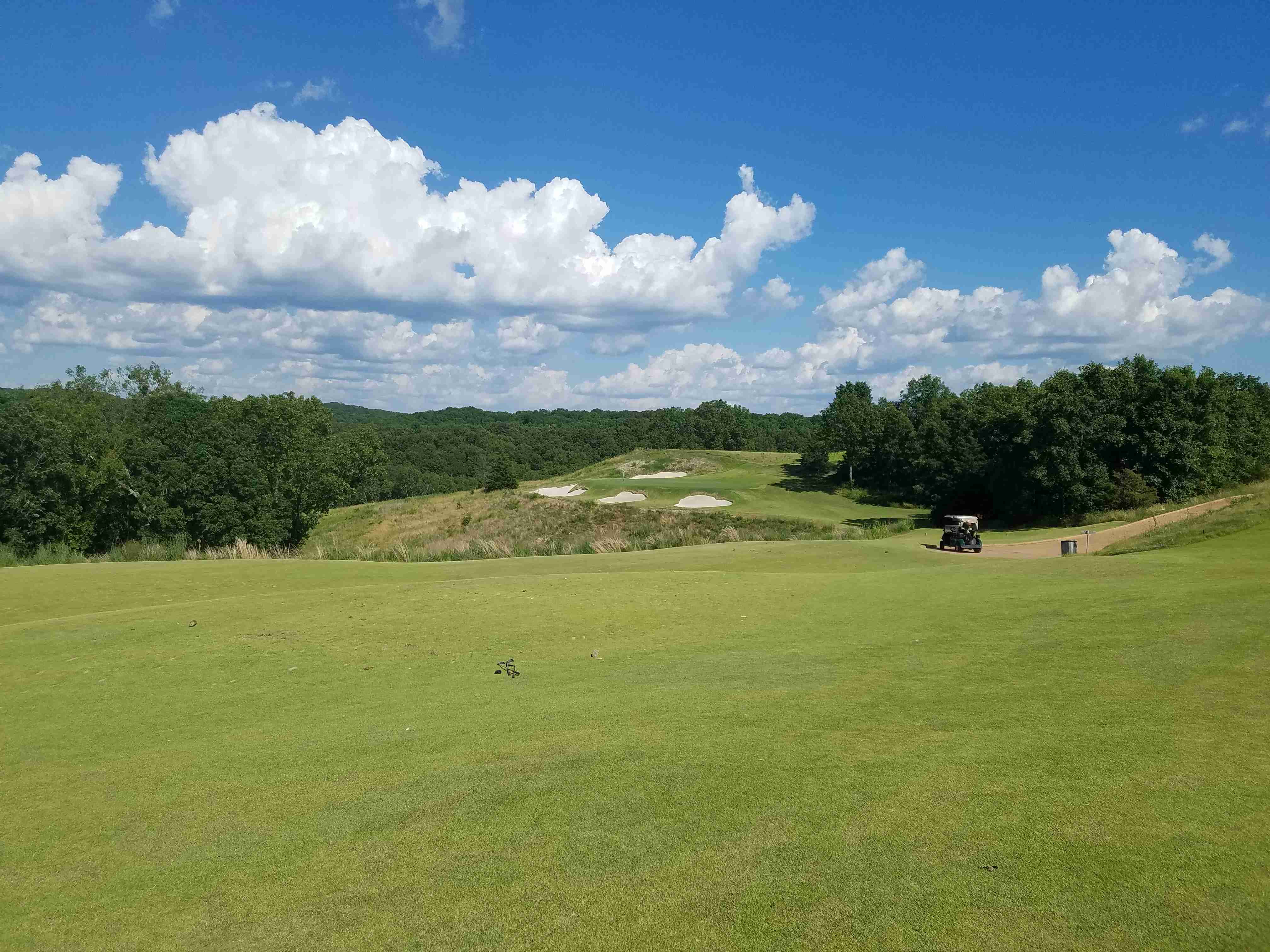
The plateaued green sits perfectly into the hill on this memorable par 3. This short hole requires good distance control or the golfer will have a difficult time making a par or possibly even bogey. The front bunkers sit well below the level of the green and make for a tough time for an average golfer.
Hole 9
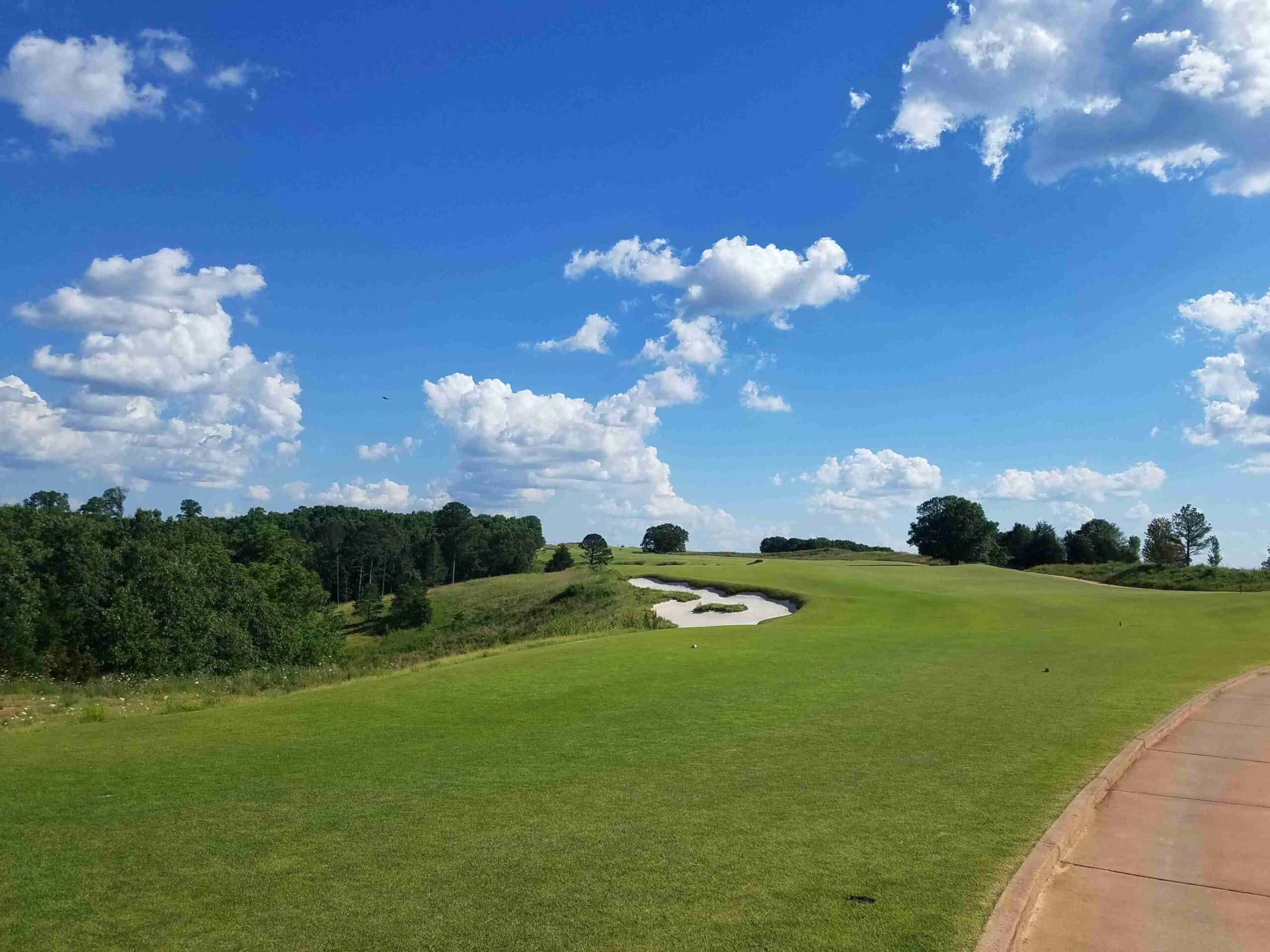
The third par 5 on the front nine has a challenging tee shot if the player wants to hit it far enough to go for the green in two. The landing area just in front of the fairway bunkers is almost 70 yards wide, while it narrows to around 40 yards past the bunkers. If the golfer is able to hit a good drive the rest of the hole is straightforward.
Hole 10
The landing area for the tee shot on number 10 is generous, though being in the right half of the fairway leaves a shorter approach up the hill to the green. The left greenside bunker is not really in play except on a poorly struck approach.
Hole 11

The only par 5 on the back nine forces the player to navigate the second shot around a tree in the fairway. The green falls away steeply on the left side of the green and could prove a difficult up and down. Leaving an approach in the correct spot gives the golfer a good chance at birdie and an easy par.
Hole 12
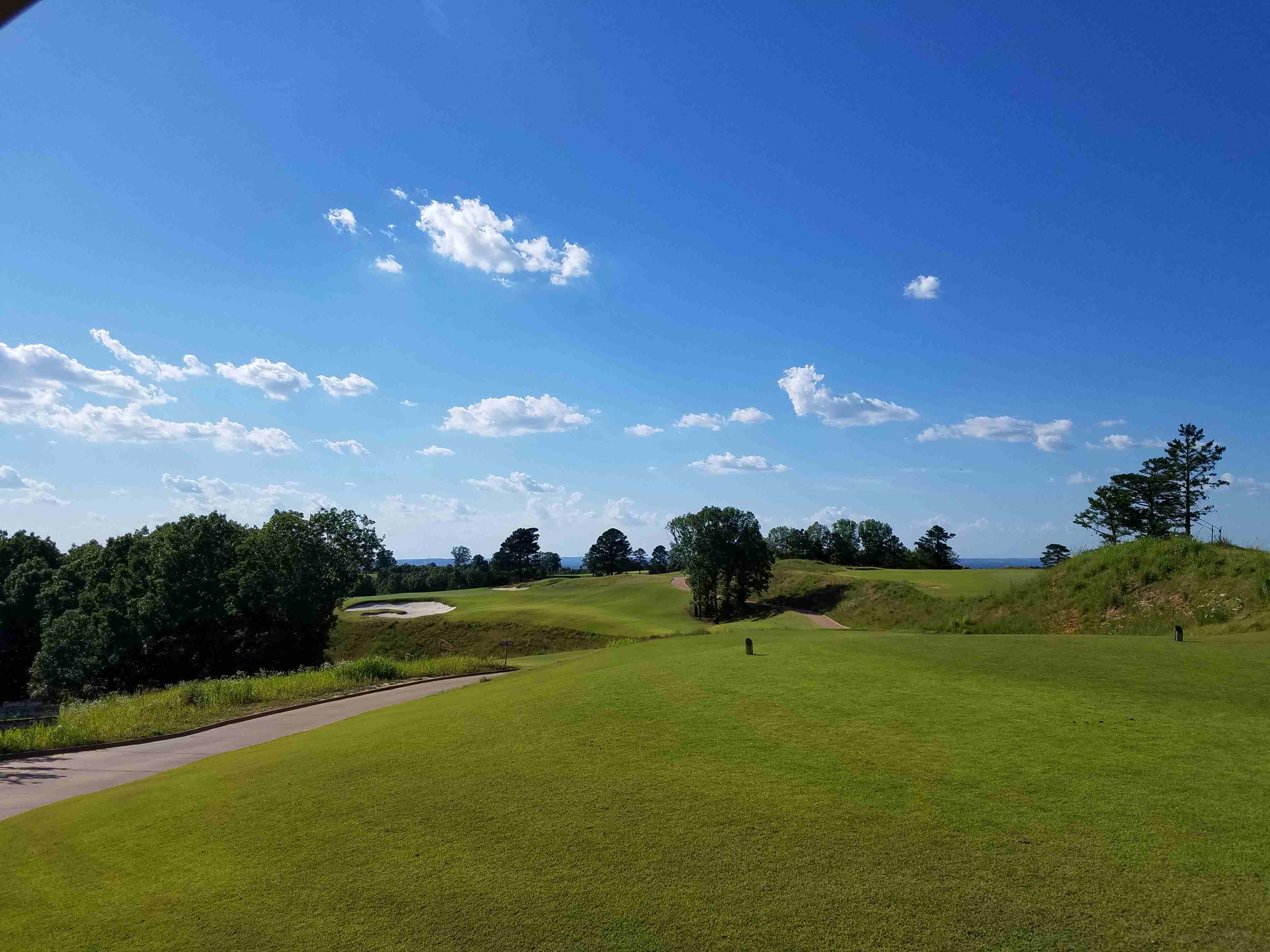
Hole 12 is a classic “Redan” template hole where the green slopes from front right to back left with a bunker short of the green. The green has been labeled the largest in Missouri and is over 13,000 square feet. If the pin is back left and the golfer barely gets a tee shot on the front of the green, the putt could be over 140 feet! Any pin in the center or on the left side of the green allows the player to use the slope of the green to feed the ball toward the hole. The front left bunker is about six feet deep and presents a challenge to players that end up in the sand.
Hole 13
Hole 13 is what Coore and Crenshaw refer to as a par 4 and a half. It is one of the longer par 4s on the course. The tee shot plays across a ravine and the approach shot plays up the hill to the green. The 75 yard wide fairway feels impossible to miss, but a drive up the left side shortens the hole.
Holes 14 and 15
Holes 14 and 15 run parallel to one another. Hole 14 is a blind tee shot that plays down the hill, while 15 is also blind and plays back up the hill. The green at hole 14 has a significant slope that can often be used to the player’s advantage to move the ball toward the hole. The main challenge of hole 15 is the blind tee shot. The landing area narrows closer to the green. There are some difficult fairway bunkers that should be avoided up the right.
Hole 16
This dogleg left plays slightly uphill on the approach shot. The fairway narrows near the bunker but laying back off the tee provides a wide landing area. Laying back to the wide part of the fairway will leave an approach close to 180 yards.
Hole 17
Hole 17 is the most picturesque hole on a course full of beautiful holes. The short downhill par 3 gives a panoramic view of the Ozark Mountains that surround Branson. The green slopes from front to back and left to right. This makes the left bunker a difficult up and down if the pin is on the left side of the green.
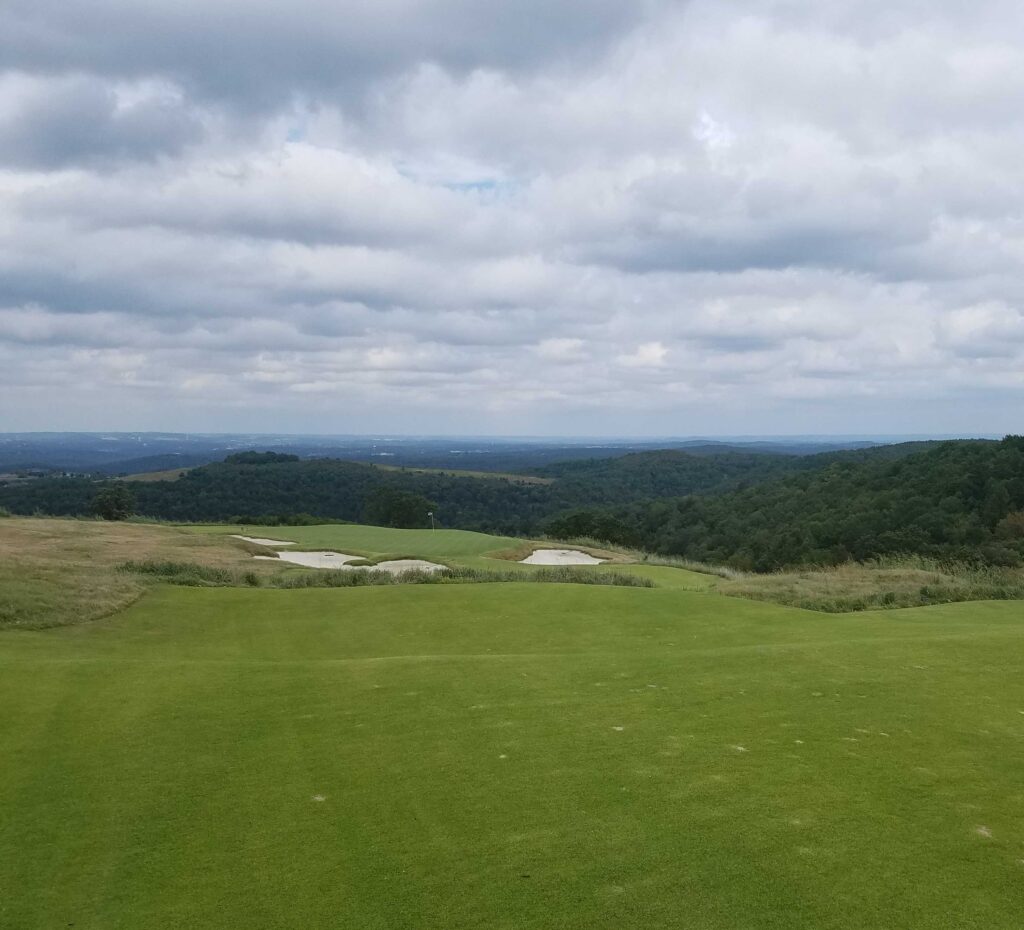
Hole 18
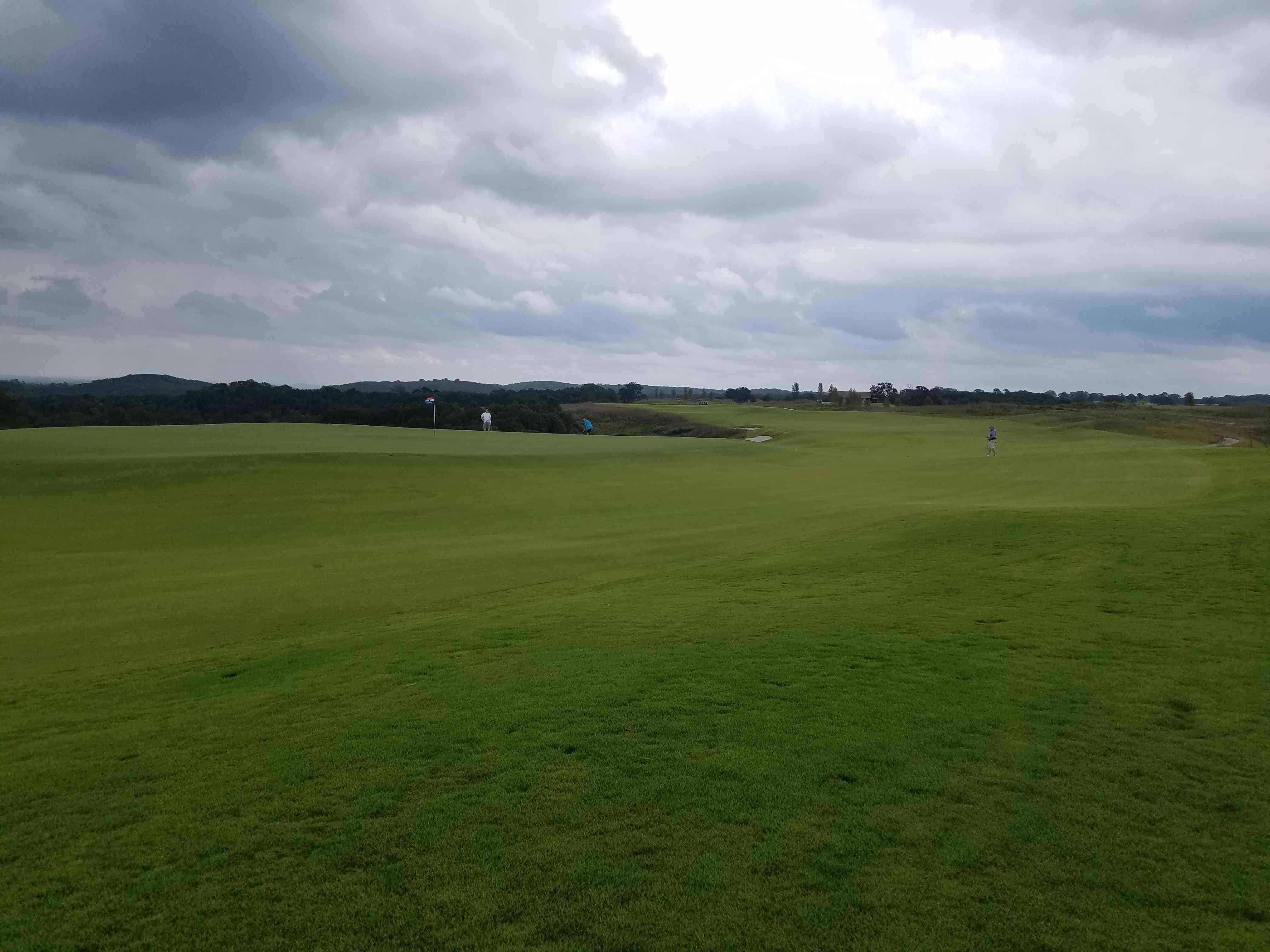
The finishing hole at Ozarks National golf course takes the golfer back up the hill to the clubhouse. The dogleg right has a generous fairway with only a few slender bunkers to avoid. The 18th green is the second largest on the course at over 12,000 square feet. The major challenge of the hole is hitting a good approach by gauging the distance correctly up the hill.
Green fees at Ozarks National Golf Course
April 18 – October 23
Resort Guest: $225 | Public Guest: $250
Junior (17 & Under) | $75
March 11 – April 17 & October 24 – December 4
Resort Guest: $190 | Public Guest: $215
Junior (17 & Under) | $75
December 5-31
Resort Guest: $150 | Public Guest: $165
Junior (17 & Under) | $65
Links
No Laying Up Crash Course Video
Ozarks National Website
Book a Tee Time at Ozarks National
While Ozarks National is not located in Arkansas, it is just a few miles north and is a must-play for any Arkansas golfer. For more information on golf in Arkansas, please visit our post on the best public golf courses in Arkansas.

Great post